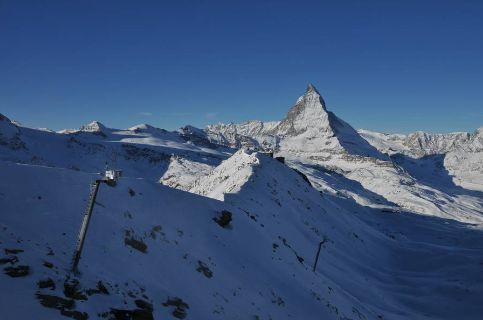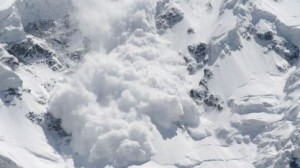Grab on to something. This obvious-sounding tactic greatly depends on the size of the avalanche, but in smaller, less powerful situations, it can save a life. While major avalanches have the strength to rip trees and rocks from the ground, grabbing onto them during a smaller slide can keep you in a static location and not get disoriented as the snow compacts around you. Even though huge avalanches do sweep large rocks and trees, if you hold on to something sturdy, it may prevent you from getting buried or at least stay close to the surface.
Swim. If you are swept off your feet in an avalanche, do whatever you can to keep yourself as close to the surface of the slide as possible. People debate whether or not a swimming motion is the most effective, but if you can increase your surface area using your arms and legs to help you remain on the surface, you will increase your chance of either ending up on the surface of the avalanche when it slides out or being closer to the surface, which will increase your chance of survival. Try to stay afloat and keep your head in the open air by swimming as hard as you can in the direction of the fast-moving snow and try to breathe through your nose to prevent snow from gathering in your mouth.
Create an air pocket. When buried in snow, asphyxiation is your biggest worry. Cupping your mouth when you are being thrown around by the snow will create a small pocket of air for you to survive on for up to 30 minutes.
If cupping your hand was unsuccessful, then use either your free hand or an avalanche shovel to dig an air pocket near your nose and mouth. Take a deep breath before the snow settles. Right before the snow settles, inhale deeply and hold your breath for a few seconds. This causes your chest to expand, which will give you some breathing room when the snow hardens around you.
Holding your arms up. Once you have managed to make an air pocket, with one arm and you’re able to move your other arm as an avalanche slows to a stop, thrust it upwards towards the avalanche surface. Raised hands, gloves, and poles have helped alert rescuers to victim’s location. You can also have your arm straight above your head before you get buried, helping others to rescue you quicker. If you do not know which way is up, sometimes spitting out a small amount of your saliva can help determining which way is up.
Remain calm. Once you’re buried in an avalanche, you won’t be able to move, and snow will be packed around you. If you try to struggle, you will waste valuable oxygen and energy resource to do your best to stay calm. If you hear people nearby, try to call them, but don’t keep it up if they don’t hear you. You can probably hear them better than they can hear you, and shouting will just limit your air supply.
No one wants to be a victim of an avalanche and it is very scary. But please do not limit yourself from having fun. Knowing these tips is better than not knowing them. By knowing these tips for avalanche, you can have an amazing time at Zermatt in the snow.


